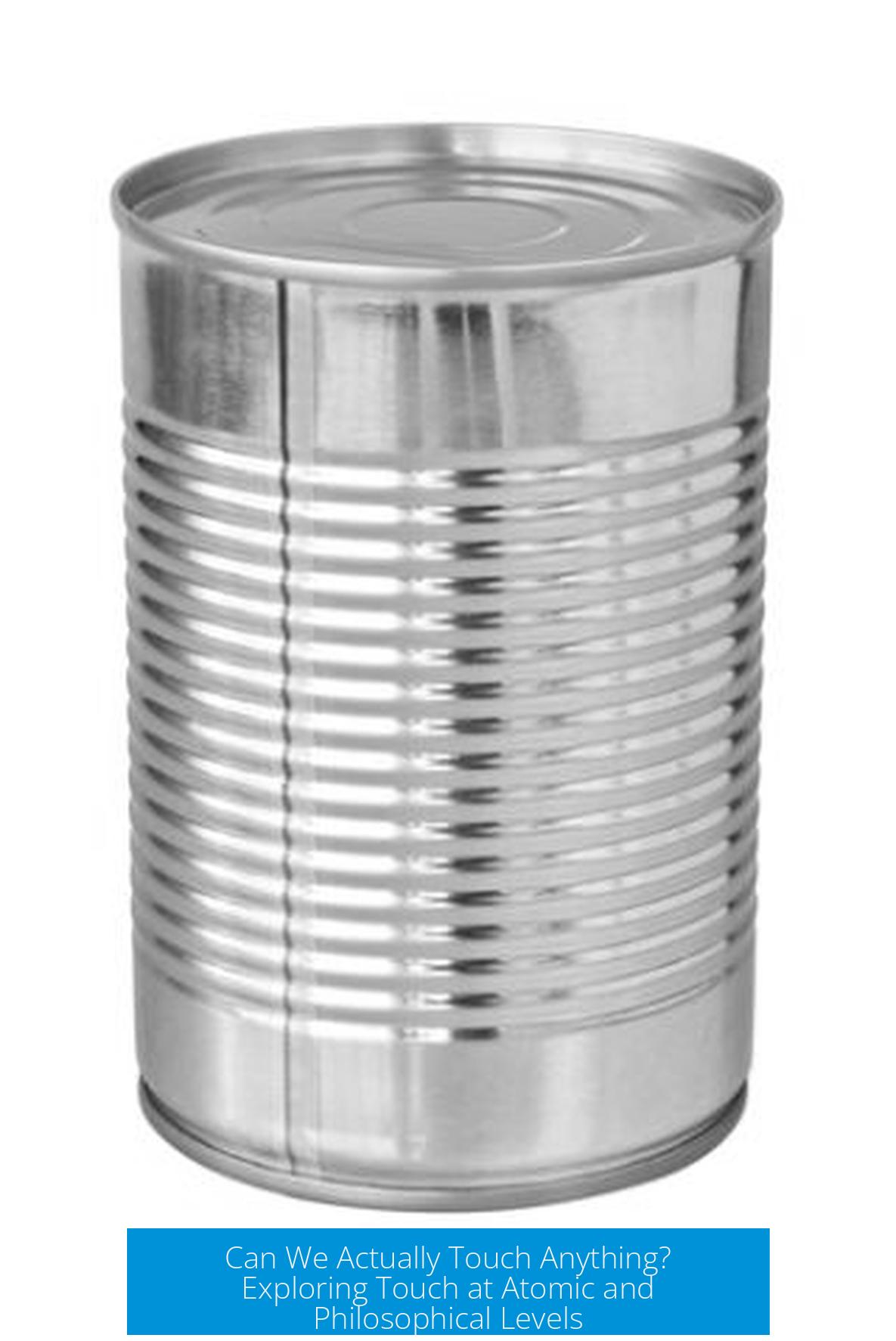Can We Actually Touch Anything?

At the atomic level, humans never truly “touch” objects in the traditional sense; rather, the sensation of touch results from interactions between electron clouds surrounding atoms, creating repulsive forces felt as pressure. This vibrates between the literal physical reality and the practical, sensory experience of touch.
Understanding Touch at the Atomic Scale
Electron Clouds and Repulsion
Atoms consist mostly of empty space, with electrons occupying diffuse clouds around dense nuclei. When attempting to “touch” something, no two atoms come into direct contact. Instead, the outer electron clouds repel one another due to their negative charges. This electron cloud interaction prevents atoms from merging or passing through each other.
The feeling of touch arises from this repulsion force. When fingers approach a surface, electrons in the skin’s atoms push against electrons in the object’s atoms. These electromagnetic interactions generate pressure sensations perceived by nerve endings. This explains why, for example, the skin cannot penetrate a solid baseball bat. It physically “feels” solid due to this invisible force, not because atoms collide in a classical sense.
Atoms Are Mostly Empty Space
Atoms lack traditional solid surfaces. The tiny nuclei carry positive charge and most of the atom’s mass, while electron clouds occupy a volume much larger than the nucleus. Because electron clouds act more like probabilistic clouds rather than hard spheres, the idea of atoms “touching” like miniature billiard balls is misleading.
The vast empty space inside atoms means objects are, quantum mechanically, mostly vacuum at the atomic scale. The kind of solid contact experienced daily is an emergent property from vast numbers of such atomic electron repulsions, not a physical fusion of atoms.
Philosophical and Linguistic Perspectives
The concept of “touch” involves more than physical interactions; it also carries philosophical and linguistic nuances. Since atoms never physically merge or contact directly, what qualifies as “touch” becomes a matter of interpretation.
Touching objects or feeling textures remains a valid sensory experience regardless of this atomic reality. This aligns with the notion that “touch” is a human construct to describe a specific kind of electromagnetic interaction. For example, if a tree falls on a person who loses consciousness with no witness, one might question whether the tree “really” touched the person. The question implies that touch may depend on perception or observation.
Different Types of “Touch” Beyond Repulsion
Chemical Touch and Molecular Interactions
Some forms of interaction extend beyond mere electron repulsion. Consider dipping a finger into 100% ethanol. Here, molecular interactions such as hydrogen bonding can occur between ethanol molecules and skin proteins. This represents a chemical form of touch, where molecules bind or interact more intimately.
Additionally, lipids or fats within the skin may dissolve partially in ethanol, further blurring the boundary between distinct bodies. This “chemical touch” constitutes a physical interaction closer than simple repulsive contact—molecules intermingle or bond, altering each other’s structures.
Extreme Example: Nuclear Fusion
The closest physical analogy to actual “touch” involves nuclear fusion, where atomic nuclei overcome repulsive forces and merge. Even then, an extremely small but nonzero distance exists between nucleons (protons and neutrons). Such interactions occur under extraordinary conditions, far removed from everyday experience.
Quantum vs. Classical Views on Touch
Quantum physics challenges classical intuition. Interactions once assumed as direct physical contacts do not hold analogously at quantum scales. Quantum particles exhibit distinct behaviors: wave-particle duality, probabilistic positions, and governed by forces rather than mechanical impacts.
The Pauli Exclusion Principle plays a role in maintaining atomic integrity by preventing electrons with identical quantum states from occupying the same space. However, its relevance to the everyday experience of touch is limited; it is not the principle behind feeling solid objects but contributes to atomic structure and stability.
Practical and Paradoxical Views on Touch
Zeno’s Paradox and Approximations
Touch involves practical approximations rather than infinitely precise definitions. Like Zeno’s paradox where Achilles never exactly overtakes the tortoise but effectively wins the race, touch is about being “close enough” to produce sensory feedback instead of exact atomic contact.
Distance can be divided endlessly in theory, but in real life, when two surfaces approach within electron cloud interaction range, the sensation of touch occurs. This illustrates how infinite divisibility concepts do not prevent the practical event of touching.
Limits of Perception and Measurement
Human senses perceive touch through pressure and mechanical feedback prompted by electromagnetic repulsion. Instruments alone cannot discern “true” contact at atomic scale because of fundamental quantum uncertainties and experimental limits.
Summary of Key Points
- “True” atomic contact never occurs; atoms interact via repelling electron clouds.
- Touch sensations arise from electromagnetic forces, not physical fusion or collision.
- Atoms mostly consist of empty space, lacking traditional “surfaces.”
- Chemical interactions can create more intimate forms of “touch” involving bonding or dissolution.
- Quantum mechanics redefines classical notions of contact and solid matter.
- Practical touch relies on sensory and physical approximations rather than exact atomic contact.
- Philosophical debates question the nature and reality of “touch” beyond sensory experience.
1. Do atoms actually touch when we feel something?
No, atoms do not physically touch. Their electron clouds repel each other, creating pressure that we sense as touch. This electron cloud interaction prevents atoms from making direct contact.
2. How does electron repulsion create the sensation of touch?
When electron clouds of your skin approach another object’s electrons, they repel each other. This repulsion creates a force that pressure sensors in your skin detect, producing the feeling of touch. It’s an interaction, not physical contact.
3. Can chemical interactions count as real touch?
Yes. For example, if your skin contacts pure ethanol, molecular bonds and dissolutions occur. This chemical interaction is a true physical contact, different from mere electron cloud repulsion.
4. Does the classical idea of touch fit with quantum physics?
No. Quantum particles interact differently, making classical concepts of touch inaccurate at microscopic scales. Touch in the ordinary sense is a useful approximation, not a precise description.
5. Is touch more about perception than physical reality?
Philosophically, touch depends on observation and interpretation. Without perception, questions arise about whether touch truly happens. Practically, we understand touch as a real event, despite the complex atomic nature.





Leave a Comment